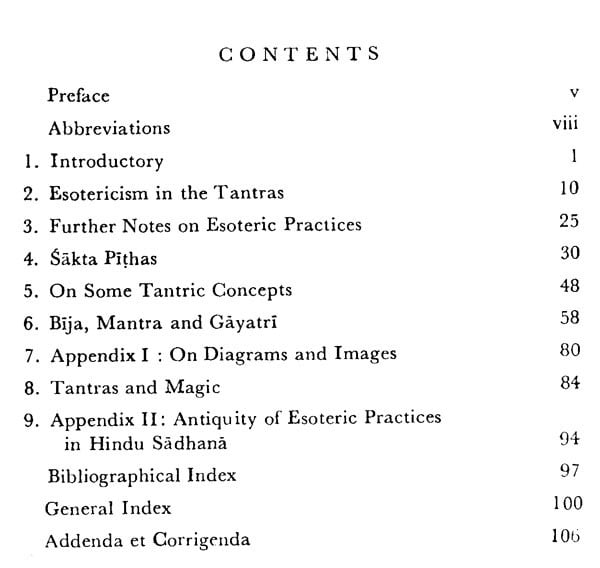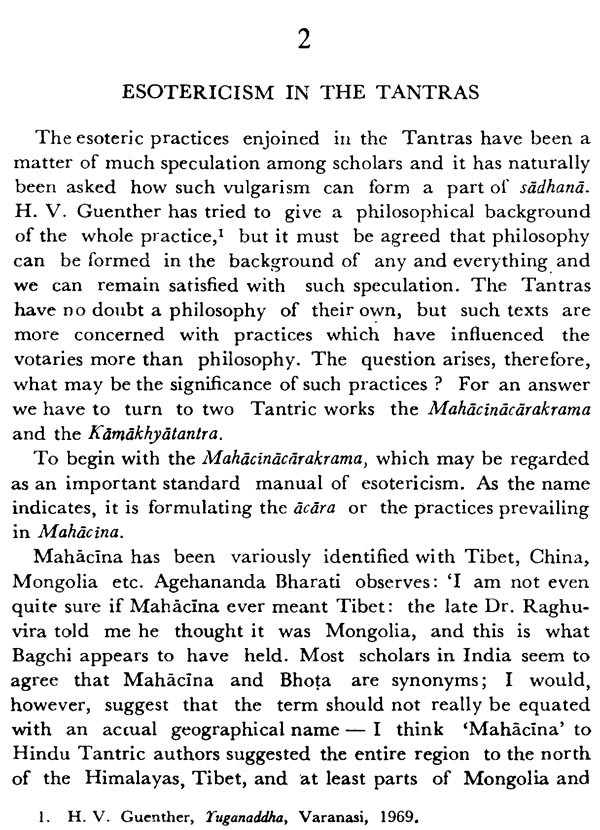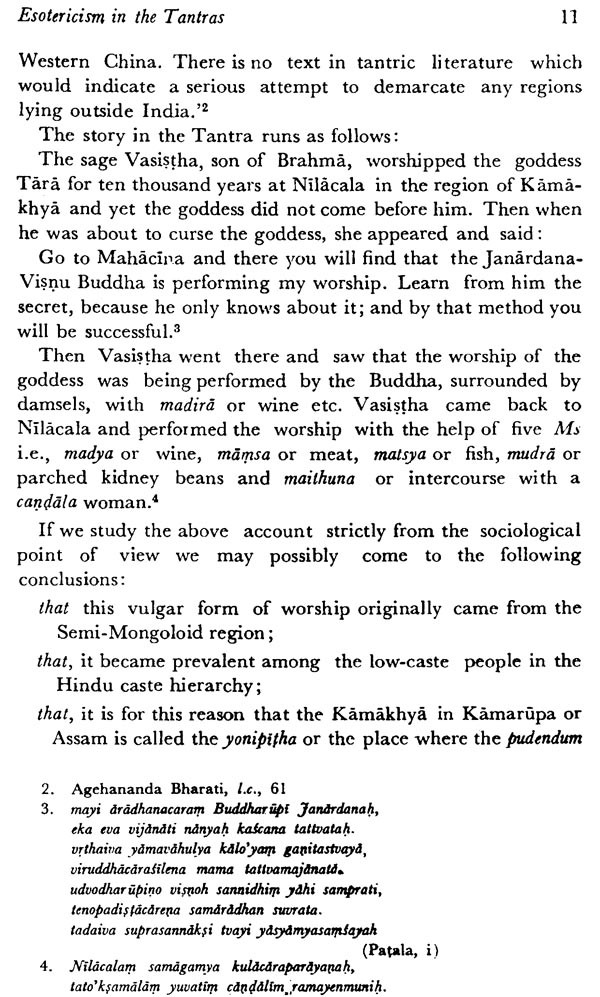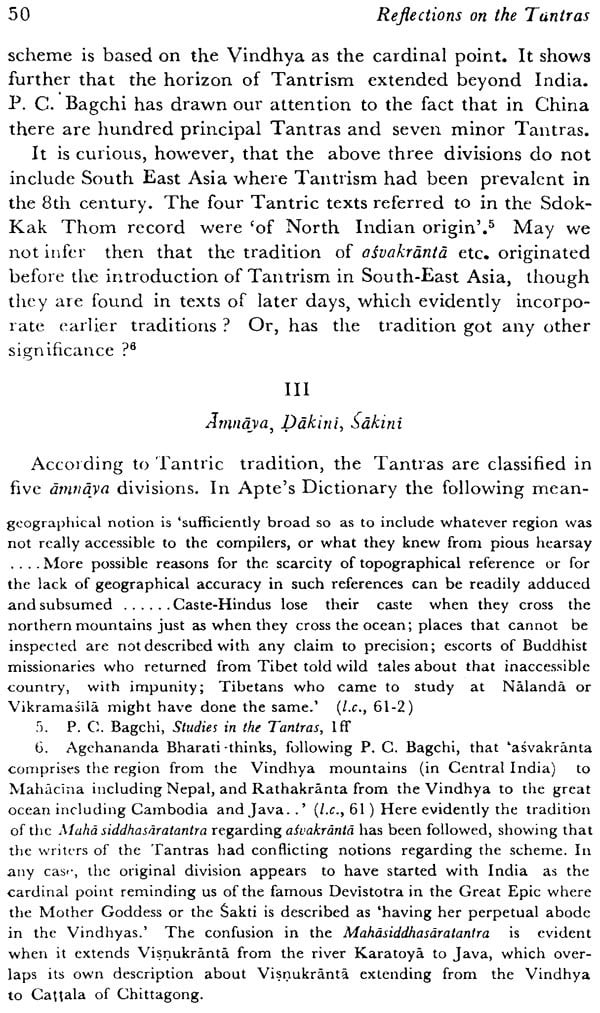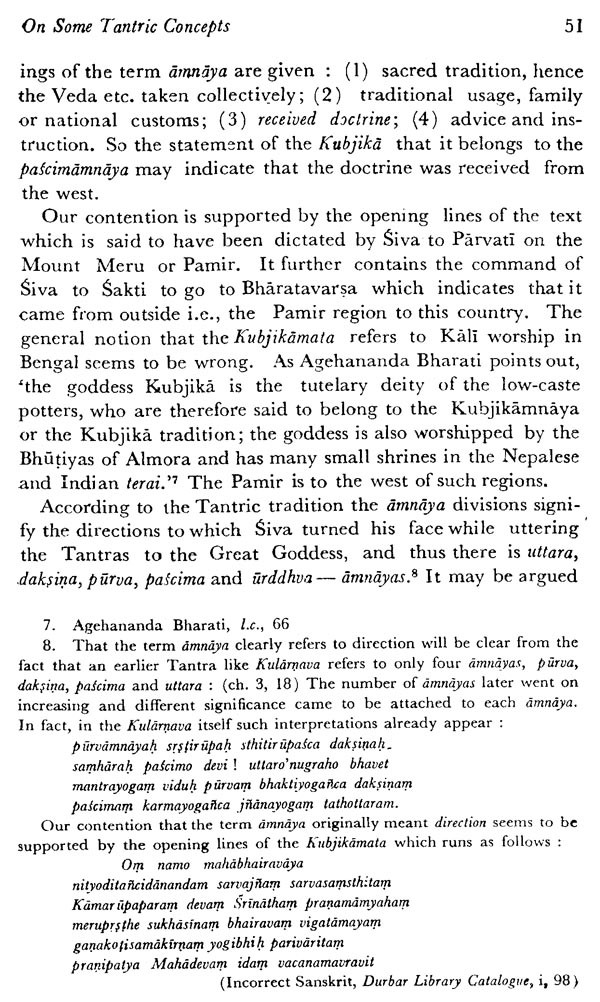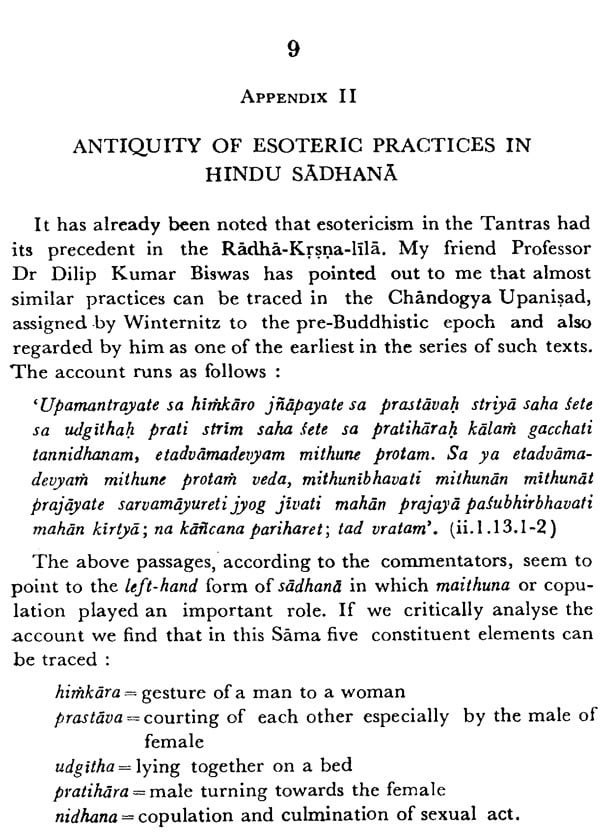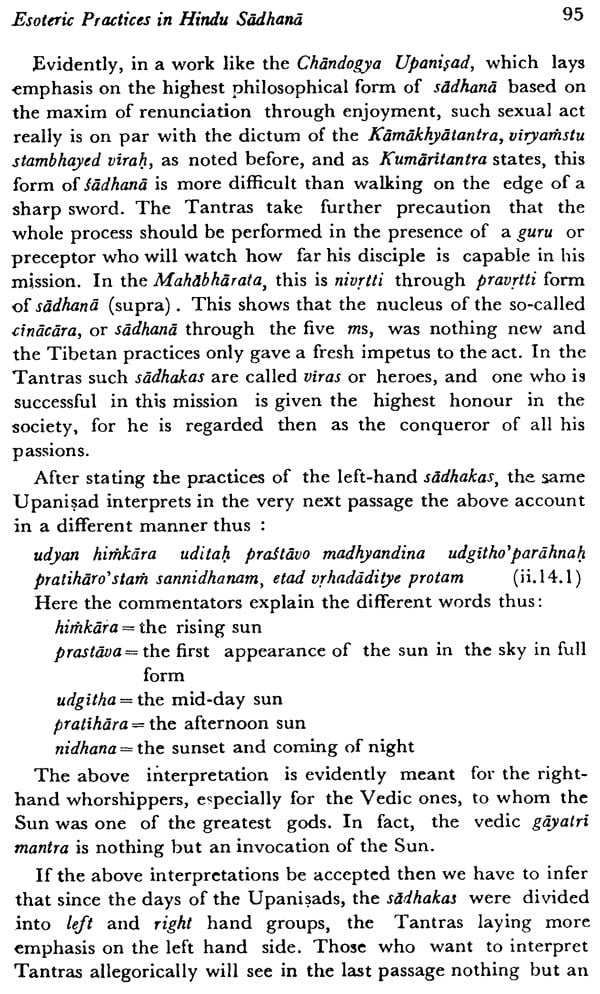Preface Tantricism has often been looked upon from the sociological or the Marxist points of view, the former arriving at the conclusion that it is a cult or practice full of vulgarism of the uncultured and half-civilised people, and the latter maintaining that it is nothing but a crude form of the worship of earth with her fertility often regarded as a female deity. In the following pages, an attempt has been made to present a brief outline of the system from the point of view of the Tantrics themselves. The author has the advantage of living in a place abounding in followers of Tantricism, genuine or fake, following the highest philosophy or the meanest methods likely to do injury to enemies or good to friends. Some such practices, however, may appear to us to border on the verge of black art. In my treatment of the subject, I have ventured to differ from D.C. Sircar's account of the Mahabharata in connection with the pithas and the reasons for the same have been stated in the Addenda.
My best thanks are due to Professor Dr. Dilip Kumar Biswas and to Adhyapaka Kanchan Chakravarty, Reader, Kala-Bhavana for drawing my attention to a passage of the Chandogya Upanisad dealing with esotericism and to the artistic representation of the esoteric form of Tantric Sadhana respectively. To Adhyapaka Dr. Pranabananda Jash my thanks are also due for taking upon himself the laborious task of proof-reading. The indices have been prepared by my wife Dr. Latika Chattopadhyaya.
Introduction The Saura samhita, copied in 991 A.D., 'with two leaves in Gupta characters giving a number of Tantric formulae', the Kubjikamatatantra, Nishsvasatattvasamhita and Paramtharamatatantra, in traditional Gupta scripts, make an interesting study.2 They show that Tantrism came to the forefront in the Gupta age, and further that whatever may be the date of a copy, (cf. Saura samhita) the original may be, at least in some cases, art older one. As the texts show, it is wrong to believe that Tantrism began solely centering the Mother Goddess. The first deities in the Tantras were the Sun (cf. the Saura samhita, and the Saktis, like Vagisvari (cf. Paramesvaramatatantra, where she is described as the highest Sakti) and Kubjika, a goddess of the potter class. It is therefore not without significance that the Gangdhar inscription, referring to the Great Mother with her associates, the Mini, and the magic rites, comes from the same period, 423-4 A.D. As the Kubjikamata text refers to purva tantra, it may be assumed that Tantrism began in an age when the Scytho-Kusana impact was still in force, inasmuch as the Sun cult of the period shows Magian influence, while the Kubjika actually refers to the Magas.
Book's Contents and Sample Pages
